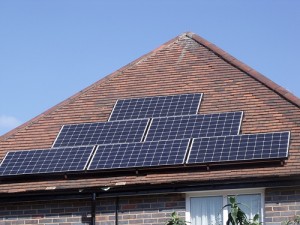By Sascha Yim, Guest Blogger*
 In the latest development in the country’s unfolding net metering battle, the Arizona Corporation Commission recently ruled that the state’s utility, Arizona Public Service (APS), could impose a $0.70 per kilowatt charge on solar customers beginning in 2014.
In the latest development in the country’s unfolding net metering battle, the Arizona Corporation Commission recently ruled that the state’s utility, Arizona Public Service (APS), could impose a $0.70 per kilowatt charge on solar customers beginning in 2014.
The decision comes at a time when the future of net metering policy is one of the solar industry’s most hotly debated issues.
Net metering, which requires utilities to purchase, at retail rates, the solar energy its customers send back to the grid, has been hailed as instrumental in encouraging the growth of rooftop solar across the country. Utilities, however, are concerned about the revenue losses they say the policy causes and some have been aggressively advocating for its repeal or revision. The policy is currently in effect in 44 states, but is now being called into question in several of them. States like Arizona, where high rates of sunshine make it an ideal candidate for solar, may lay the framework for similar discussions to follow in many additional states.
A central argument in the debate turns on the assertion that solar customers are not paying their “fair share” of electricity costs. In its proposal filed with the Arizona Corporation Commission in July, APS claimed that “residential customers with rooftop solar do not pay for most of the electricity services they use.” According to APS, net metering shifts infrastructure, maintenance, transmission and distribution costs associated with grid upkeep from solar to non-solar customers. Utilities argue that this shifting of costs from typically more affluent solar customers to typically lower income non-solar customers is unfair and unsustainable.
But solar advocates argue that the utilities’ cost-benefit analysis does not take into account the many economic benefits of solar like long term environmental benefits, avoided costs and emissions associated with building new power plants, and reductions in peak load.
In an attempt to recoup lost revenues and stave off the so called utility “death spiral” – where increasing numbers of customers switching to solar will cause costs to shift to the remaining customers, thereby incentivizing more customers to switch to alternative electricity methods – APS proposed two options: either get rid of net metering altogether and replace it with a “bill credit” system that would compensate solar at lower rates, or impose a charge on solar customers to the tune of $40-$50 a month.
In the regulators’ 3-2 vote, they agreed with the utilities that a cost shift was occurring and imposed the $0.70 per kilowatt fixed charge to compensate for such a shift. For the average solar customer, this equates to a $5/month increase—considerably less than the company was requesting.
While solar advocates contend that the increased charge will still have a real impact on the industry, the benefit of preserving net metering is significant. This not only leaves intact an influential incentive for solar in Arizona, it also sends a message to other states where the battle over net metering continues. The debate was so lengthy and clamorous that it was evident that a change was imminent; a modest price increase – especially considering the proposed alternatives – is arguably a good compromise.
Photo courtesy of ell brown.
*Sascha Yim is an attorney with a background in renewable energy transactional law and is currently assisting the Center for Climate Change Law with its research into state distributed generation policies.

